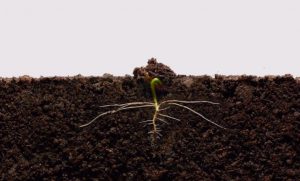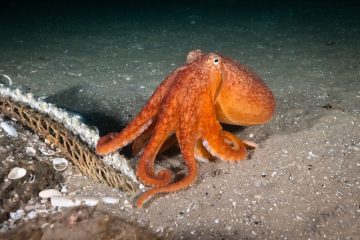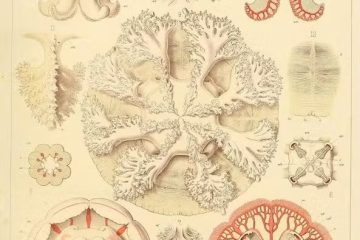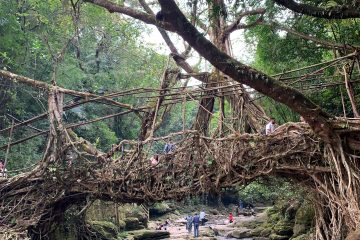Emotion for Change: An Interview with Sara Michieletto

Sara Michieletto is an Italian violinist who has performed worldwide, including with the London Philharmonic Orchestra and the BBC Orchestra. She has collaborated with highly acclaimed conductors such as Muti, Maazel, Masur, Pretre, Gardiner, and Chung. Since 1998 she has played the first violin in the Symphony and Opera Orchestra “La Fenice,” Venice.
Starting in 2004, in addition to her work as a violinist, she began working as an emotional awareness trainer through music, collaborating with UN agencies and other institutions in developing projects in Eritrea, Palestine, Brazil, India, Indonesia, and Bosnia Herzegovina. This work is collected in the project “Music of Emotion.”
In 2015, she created “Emotion for Change,” which features several musicians and artists concerned about the critical time we are living in regarding climate change and the way we perceive and interact with our natural world: Through concerts, educational performances, and the production of artistic videos, Emotion for Change raises awareness and motivates listeners to develop more sustainable practices. Her many performances led to a number of concrete initiatives: 3,000 seeds have been distributed, three schools became plastic-free, and many small changes were initiated, like planting, being careful about the use of water, energy, and garbage. In 2020, Michieletto, together with other artists, created the social media platforms @artistsforplants, where artists from all over the world can share their works about the centrality of plants in human life, developing and showing a feasible model for the future. One of the artwork displayed on that platform—a video-concert—has recently been presented at the 77th International Film Festival of Venice.
Counterpoint: Thank you, Sara, for your willingness to speak about your work and how it intersects with the Counterpoint initiative. Can you tell us a little bit about how you came up with the idea of Emotion for Change and what your main goals are with this project?
Sara Michieletto: Two women—Elisabetta Zavoli, a dear friend and photographer, and Maria Teresa Bausone—have been a source of inspiration for me. The former by sharing with me her deep awareness of the critical environmental situation that humans are living in, and the latter through her exemplary environmental practices and by asking me to perform on occasion of the 2015 United Nations Climate Change Conference (COP 21). At that time, when I had to decide what kind of concert to perform, I thought I should try to use the beauty of the music and its emotion as a means to encourage the audience to engage in action.
I also realized that my music, and the concepts behind it, should be based on science in order to convey our message with authenticity and depth. We therefore started collaborating with generous and great scientists, such as Amelia De Lazzari, Luca Mercalli, and Fabio Trincardi. The main concept of our concert is that we are in a deep relationship with nature, and that we are not separated. Our performances (with saxophonist Giorgio Schiavon) start with the composition “Nuvola piuma,” which I imagined while sitting on the grass with my child, listening to the similar sounds of our breath and the breeze, and realizing that “wind and breath are not separated.”
Counterpoint: The idea that sound is a basic feature of the natural world—as it is of human music—has been formulated by a number of artists, musicians, and scholars. Are there any people whose work you cherish in particular and whom you would mention as inspirers?
Sara Michieletto: Yesterday I went to Cremona, as an enthusiastic colleague suggested that I should visit our luthier there and try a wonderful Stradivari violin that was available, a 320 year old instrument. I was thrilled to see those magnificent artworks, perfectly carved and built from a piece of wood, accurately chosen from the “resonance spruce” of the Val di Fiemme: those spruces offered Antonio Stradivari wood without any imperfections, as they grew healthy and had particularly regular rings, due to the “little ice age” that happened in that period.
After some contemplation, I got the courage to play the instrument, and the vibrations started to spread all over: outside and inside. An Italian luthier was listening to my playing and said he was feeling “literally pushed” by the sheer quantity of sound. As for myself, I was caressed by the regular and beautiful vibrations emitted by the instrument inside my bones. It was like emitting a nucleus of warm and enveloping sound, surrounded by a circle of golden light.
I couldn’t stop playing that instrument. And while experiencing this beauty I was thinking about sound being a basic feature of the natural world, about its transformational power, and about something inexplicable in the spreading of vibrations in air and in matter.
It was a mixture of physics and metaphysics, if you will, in which I could feel the sound directly in my body and bones, but also in the beauty of the emotional nuances that it conveyed. For me, to be able to produce such a glowing vibration, was like accomplishing, for a brief moment, the unity that we all need.
Counterpoint: From a “Counterpoint of view,” it is wonderful to explore music and soundscapes, as this is one of the origins of the very term Counterpoint. In a more metaphorical sense, how do you think your project intersects with the visions of Counterpoint; put differently, in what way can we understand music and sound as an alternative mode of knowing that needs to be amplified in the current situation?
Sara Michieletto: Again, to answer this question, I’d like to tell you about a direct experience I had. Last year, I had an unforgettable experience in the Amazon, where I spent ten days in the artists’ residence called Labverde. I had the chance to listen to the amazingly varied, bio-diverse, and rich soundscapes of the place, and I learned that each sound emitted by the animals has a specific meaning, often with a sexual message or as a warning of danger. The soundscapes, building on the basic notes of wind, water, and plants creaking, is always filled with some animals’ cries or verses, and they fill that space in a sort of musical composition. Two voices competing with and complementing each other is exactly the meaning of the compositional term “counterpoint,” as you know!
One year later, in August 2020, after the long period of “silence” due to the Covid-19 lockdown, I resumed playing with my orchestra, and we performed Mozart’s super famous 40th Symphony in G minor (K550). To my own surprise, what happened was, suddenly, while feeling the double bass sounds with my feet firmly resting on the ground, I started hearing something magical: the horns and the bassoons, the flute and the oboe, the strings’ dialogue, and the kettledrums were transfigured, becoming the sounds of the forest, birds, cicadas, monkeys, trees creaking, water drops, wind on the leaves, in a natural counterpoint, that made me believe to be back in the Amazon!
I was listening to the sound of the forest inside the orchestra’s instruments exactly the other way around than, as I learned later, the ecologist and sound recordist Bernie Krause when he lived in Africa. He reports:
“It was in this semi-floating state—that transition between the blissful suspension of awareness and the depths of the total unconsciousness—that I first encountered the transparent weave of creature voices not only as a choir, but as a cohesive sonic event. No longer a cacophony, it became a partitioned collection of vocal organisms—a highly orchestrated acoustic arrangement of insects, spotted hyenas, eagle-owls, African wood-owls, elephants, tree hyrax, distant lions, and several knots of tree frogs and toads. Every distant voice seemed to fit within its own acoustic bandwidth—each one so carefully placed that it reminded me of Mozart’s elegantly structured Symphony no. 41 in C Major, K. 551.”
In that same article, Thomas Fischer adds:
“Krause realized that the separation of animal song into individual voices did not present a sensible reflection of the world around us, because animals simply did not experience the world this way. Their acoustic habitat was marked instead by a deep, seemingly impenetrable constant togetherness of events, a simultaneity of myriads of different signals, the ebbing and swelling of sound from quiet moments into glorious, anthemic dawn and dusk choruses. […] Together, they form what Krause termed the “Great Animal Orchestra,” a constantly shapeshifting constellation of individual voices in motion, and he termed their symphonic soundscape a ‘biophony’—all of the “sounds originating from nonhuman, nondomestic biological sources.”
Maybe this is exactly what Mozart was experiencing while composing his music: the full range of the instrument frequencies as a unique soundscape, a constant togetherness of events. We can hear in Mozart, in my opinion, a sort of biophony, in which rare “genetic mutations” (like unheard modulations, astonishing silences) serve as a prelude to the anthropophonic kind of music, in which the human presence in the soundscape becomes, little by little, the most perceptible.
Maybe thanks to this interplay of events, music has the capacity to take us to ecstasies, to take us outside of our bodies, enabling a different perception of ourselves. To play in an orchestra sometimes is like being an individual within a super-organism, in which the contribution of each one listening and playing is fundamental to bring to life the work as a whole. It’s almost a biological sensation reminding us that we, like the notes, are made of relationships.
These are the feelings that we try to convey to our audience when we perform with Emotion for Change: the wonder and awe of beauty and the mystic sense of unity that both nature and music can convey. We wish to encourage the audience to act environmentally and respectfully, not out of fear but out of love for nature.
Counterpoint: Can you tell us about one experience in your work that made a deep impression on you?
Sara Michieletto: Last spring, I had the chance to work in the network #artistsforplants, using some plant characteristics like gratuity, diffusion, and horizontality, while creating the video documentary for Artists for Plants. I had been coordinating the activities with many collaborators: finding the idea and contents, looking for the musicians, contacting them, contacting Prof. Stefano Mancuso, discussing methodologies with the director, Silvia Chiodin, finding translators, and building up a group of followers on social media. I had the chance to collaborate with many artists, and it has been fantastic to feel the generosity and deep commitment of so many different people. It made me think that we can do so much with so little!
And when on 11 September 2020 we presented the Concerto for Artists for Plants at the 77th Film Festival of Venice, I was feeling that something very special was happening—it was an arrival point, in which a new modality of cooperation, inspired by the plants, revealed itself. It was as if the plants presented a model for thriving that humans could model in the future.
Counterpoint: What are you working on right now? Will there be new initiatives of Emotion for Change coming up?
Sara Michieletto: This last month has been quite exciting for me. I was invited, together with the photographer Elisabetta Zavoli, to a talk at the “Resilienze Festival” in Bologna. We shared our experience in the Amazon with words, photography, and music, and we presented the artwork IN-SECTUM, which is dedicated to the insects’ perspective. Later on, we met for an artists’ residence in collaboration with the choreographer Silvia Gribaudi to set up a new project, called CAMBIUM, which is intended to see the world through the plants’ point of view.
As Elisabetta Zavoli says, “it is essential to try to inhabit the views of other living beings. Putting oneself in the shoes of others is a key that opens the doors of imagination. To imagine something is to contemplate its existence; therefore, it is the first step towards change.” So, putting myself in the plants’ place, I found it challenging and fascinating to discover that plants can actually “hear” sounds very well through their roots, in the subterraneous world.
Imagine that the frequencies from 100 to 500 Hz (similar to the violin’s lower range) can help the seeds germinate, lengthen the roots, and help the plants grow! The researchers also speak of “phonotropism,” that is, plants can direct the growth of their roots according to the frequencies perceived. Now it is demonstrated that plants can sense and distinguish sound frequencies.
Moreover, recent research found out that roots can also produce real sounds: they click. Most probably, these very soft clicks are the result of the cell wall breakage during cell growth. If roots can hear and emit sounds, maybe there is a fully new way of underground communication yet to be discovered!
The soil is an amazing sound conductor and there is no need for ears to hear: vibrations can be picked up by all the plant’s cells thanks to the presence of mechanic-sensitive channels. Therefore, in plants the sense of hearing is spread out and not concentrated in one organ as in humans. The whole plant is able to hear, as if—below and above the ground—it were covered by millions of tiny ears.
How can we translate this all into a performance? At the moment, I can only try to imagine this way of perceiving sounds, as I do when I am sitting in the orchestra pit, flatting my feet on the wooden floor and feeling the harp and the low frequencies instruments’ sound vibrations. To tell you the truth, ideally, I’d love to be able to also hear the sounds (noise or silence) caused by human beings—the anthropophony, as part of the biophony. Maybe that could open up ways to create a new kind of music. But I am not there yet.
Anyway, in general, I believe that we need humble, ironic, and sincere attitudes, also in music, through which we make people smile, cry, and especially fall in love with the beauty and the mystery of life. Through this attitude, full of hope and creativity, I believe we can soothe the cry of nature (which is basically our own cry), while building an expanded awareness, and therefore wellbeing, for all of us.
Counterpoint: Thank you so much, Sara, for this conversation. We look very much forward to collaborating with you
Counterpoint blogs may be reprinted with the following acknowledgement: “This article was published by Counterpoint Navigating Knowledge on 30 September 2020.”
The views and opinions expressed on this website, in its publications, and in comments made in response to the site and publications are those of the author(s) and do not necessarily reflect the views and opinions of Counterpoint: Navigating Knowledge, its founders, its staff, or any agent or institution affiliated with it, nor those of the institution(s) with which the author is affiliated. Counterpoint exists to promote vigorous debate within and across knowledge systems and therefore publishes a wide variety of views and opinions in the interests of open conversation and dialogue.
Photo credit: Image © Emotion for Change 2020



